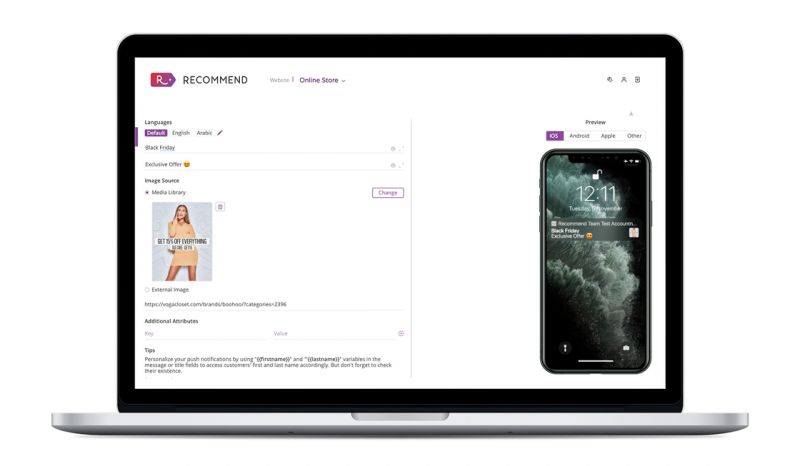Cross-selling and product recommendations

We’ve been talking about cross and up-selling for quite some time. Both techniques have been proved to be extremely effective in increasing the order value and improving the overall shopping experience. Product recommendations are the first step to personalisation. When doing it right and combining it with cross-selling and up-selling, not only will your order value go up, your conversion rate, user engagement and revenue will follow.
To refresh your mind: cross-selling is a technique to offer additional or complementary products to your customer. For example, if the user is buying a dress, you can show it shoes, bags and accessories to complete “the look”. In the case of up-sell, instead of complementary products, you will suggest to purchase higher-end versions of that same product or to pay for upgrades and extra features.
Is there a right time to do cross-selling?
There’s no “right time” to apply any of these techniques. However, doing up-sells to customers that historically don’t spend much on your website, doesn’t seem like the right approach. Same when it comes to customers buying products that require accessories or complementary services. If you don’t do the cross-selling here, you are missing a big opportunity. Let’s take, for example, customers buying cameras or smartphones. Usually, these items will need a case, bags or even insurance, so it’s the right time to do a cross-selling.
Most importantly, cross and up-sells help increase the value of any purchase, making a positive impact on your revenue and overall profits every month. Acquiring new users and making them buy your products is not an easy task. But, being able to capitalise your existent database by applying these techniques is a good marketing strategy. However, the secret to success starts with your approach. Cross-selling takes a bit of skill and flair to pull off correctly. Your approach has to be subtle. Otherwise, the customer is likely to be put off.
Ways to do cross-selling
There are many ways to do cross and up-selling. It will depend on your strategy and customers. Although, these are the most common approaches from an eCommerce perspective:
1.- Go Premium or include additional services
This approach is similar but different. In both cases, the goal is to increase the purchase value by selling a higher version (by adding extra services) or offering complementary products. For example, if you sell laptops, you can include in your offer an antivirus or an extra service provided by a third-party (a license for a web design software, cloud service, etc.) If you want to go for the premium approach, create a package that includes all the services and accessories for a special price.
2.- Bought together / Best-selling products
An excellent way to promote your products is by showing other items in the same category or your best selling products while a user is browsing your eCommerce website. For example, Recommend can predict and show product recommendations based on availability, price, and even investment return, making your cross-selling even more useful. Another option is to take advantage of the purchase intent when the user is about to pay. It has been proved that showing accessories or complementary products at this stage is always a good strategy.
3.- Volume discounts
This is a more subtle way to do cross-selling. The volume discounts take advantage of the purchase intent by offering a discount on a similar range of products. The actual discount is not significant rather than the idea of offering a deal to the customer. A consumer who decides to buy a dress from your website may feel incentivized to purchase another one at a discount, increasing the number of products in the shopping cart and the average order value. Other eCommerce brands can mimic this approach by offering similar “buy one get one” deals.
4.- Take advantage of drip emails
If you are in the middle of an acquisition campaign, the first stages of this relationship with new users are crucial to becoming your customers. So, it would help if you were careful when it comes to cross-selling. A smart and not intrusive way to promote your products and accessories is by creating an email marketing campaign to follow up automatically. For instance, if your new user buys a product from your website, the next email could be related to that brand in particular and showing it all the items available on your website. The following email could show the new season, and after that, you can send them a special promotion. It will take longer, but it will probably be more effective than losing them after the second email.
5.- Data-driven recommendations
Recommend is powered by artificial intelligence and machine learning. These technologies let our software gather and analyse behavioural data and predict buyer patterns to show product recommendations and personalised content based on your users’ interests, purchases and browsing history.


